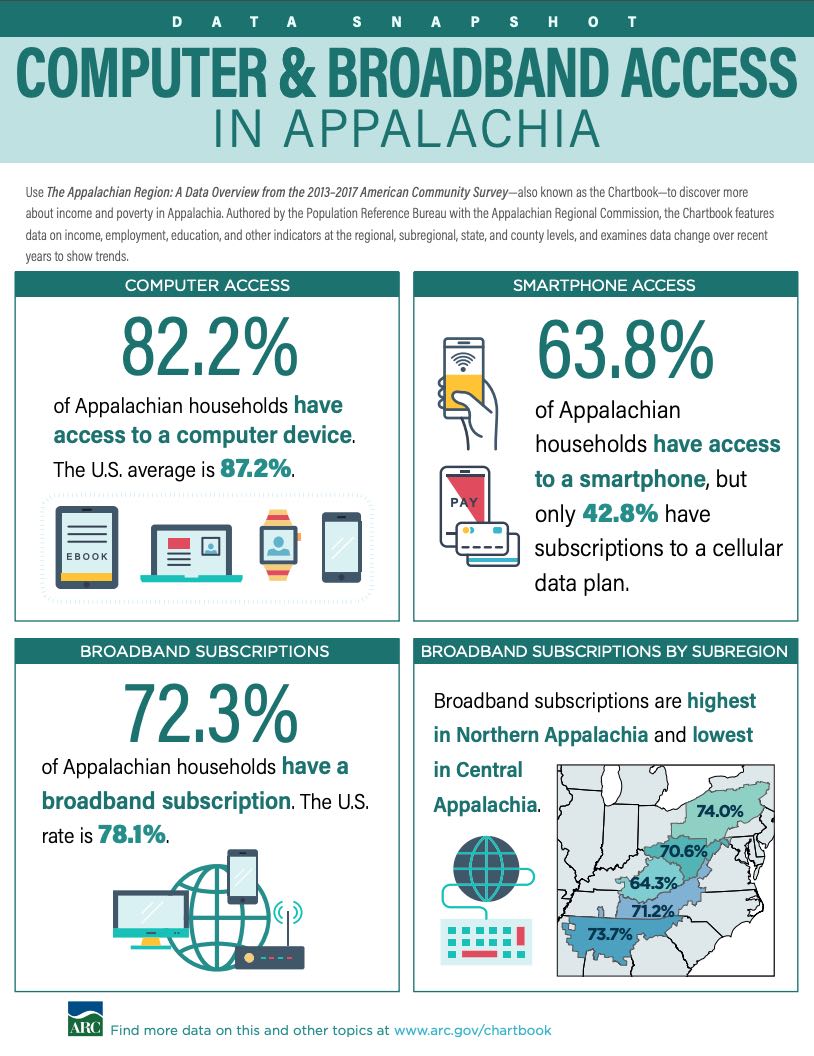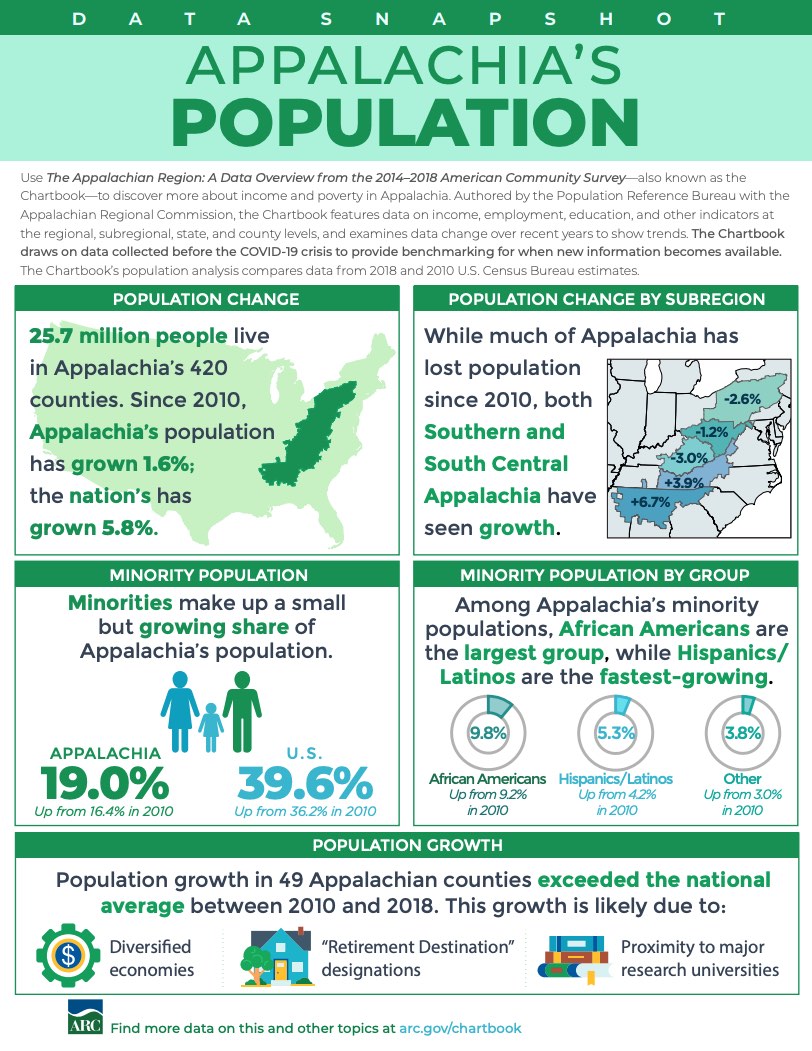Project: American Community Survey and Decennial Census Support Services
Data Snapshot. Computer & Broadband Access in Appalachia (2013-2017)
82.2% of Appalachian households have access to a computer device. The U.S. average of 87.2%.

Project: American Community Survey and Decennial Census Support Services
82.2% of Appalachian households have access to a computer device. The U.S. average of 87.2%.

Project: Demography and Economics of Aging and Alzheimer’s Disease
Neighborhood characteristics affect people of all ages, but older adults—classified here as adults over age 50—may be affected more than other groups.

Project: Appalachia: Demographic and Socioeconomic Trends
A look at population, education, employment, income, poverty, and computer/broadband access in Appalachia 2014-2018.

Project: Appalachia: Demographic and Socioeconomic Trends
The latest report on the Appalachian Region can help state and local policymakers build community capacity and strengthen economic growth.
(2009) Population trends since 2000 suggest that states in the South and West will gain additional seats in the U.S. House of Representatives after the 2010 Census.
(2008) Recent demographic trends have created a youth bulge in the Middle East and North Africa, with nearly one in every five people age 15 to 24. Despite its oil wealth and improved health and education systems, the region's political, social, and economic systems still do not meet the needs of this rapidly growing young population.

Faced with a deficit of nursing assistants and home health aides, rural areas lack the workforce they need for people to age in place, new research finds.
(2009) Lack of access to quality health care and clean water and sanitation, undernutrition, and other preventable or treatable causes lead to the deaths of tens of thousands of children worldwide every day.